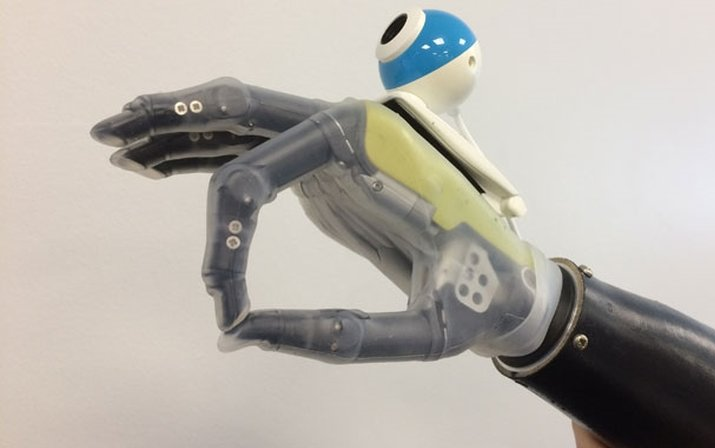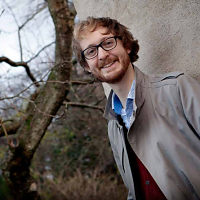This prosthetic hand has a built-in eye for added accuracy
I've got my eye on you

There are definitely times - mostly when ferreting around under the sofa or behind the fridge for a lost object - when you've probably wished you had an eye on your hand.
Well, it seems that even the creepiest dreams can come true. Biomedical engineers at Newcastle University have developed a prosthetic hand that's fitted with a camera.
The cool thing isn't just that it has a camera, but that the hand can use that camera to make it easier to pick things up. The goal is to bypass the normal processes which require a prosthetic hand owner to see an object, and then physically stimulate the right muscles in the arm that trigger the movements in the prosthetic limb.
Instead, by taking a picture of an object in front of it, the robotic hand can assess the object's size and shape and trigger the right movements without intervention from the user.
"Prosthetic limbs have changed very little in the past 100 years – the design is much better and the materials’ are lighter weight and more durable but they still work in the same way," said Kianoush Nazarpour, co-author of a paper describing the technology.
"Using computer vision, we have developed a bionic hand which can respond automatically – in fact, just like a real hand, the user can reach out and pick up a cup or a biscuit with nothing more than a quick glance in the right direction."
Neural networks
The system uses neural networks to recognise different objects, and then match them with the kind of grip they require.
Sign up for breaking news, reviews, opinion, top tech deals, and more.
"The computer isn’t just matching an image, it’s learning to recognise objects and group them according to the grasp type the hand has to perform to successfully pick it up," said Ghazal Ghazaei, lead author on the paper.
It's capable of four different kinds of grip - palm wrist neutral (such as when you pick up a cup); palm wrist pronated (such as picking up the TV remote); tripod (thumb and two fingers) and pinch (thumb and first finger).
“The beauty of this system is that it’s much more flexible and the hand is able to pick up novel objects – which is crucial since in everyday life people effortlessly pick up a variety of objects that they have never seen before,” Nazarpour added.
Ultimately, the goal of the project is to build a bionic hand that can do much more - sensing pressure and temperature, and transmitting that to the brain. The team would also like to allow the brain to control the hand directly, as opposed to connecting to muscles.
“[The camera-equipped hand] is a stepping stone towards our ultimate goal,” said Nazarpour.
“But importantly, it’s cheap and it can be implemented soon because it doesn’t require new prosthetics – we can just adapt the ones we have.”

